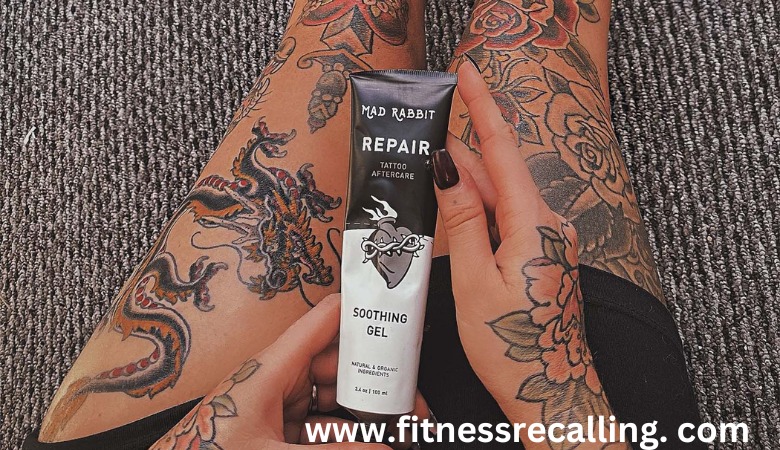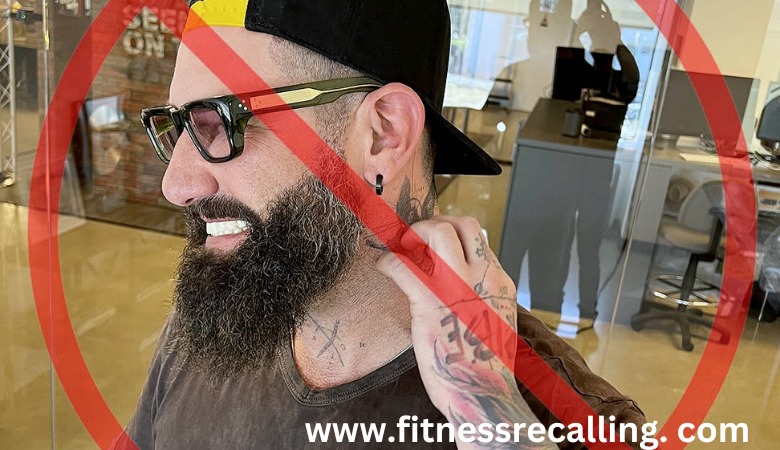An aftercare routine is just as important as finding a competent artist when it comes to tattooing, especially if you want your new ink to last. In addition to preventing infection, proper tattoo aftercare contributes to the long-term health of your tattoo and surrounding skin. An appropriate aftercare routine is essential, whether it’s your first or your twentieth tattoo.
Why Is a Tattoo Aftercare routine Necessary?
In the realm of tattoos, Finney emphasizes the significance of understanding that a tattoo essentially forms a wound on the skin, underscoring the importance of handling it with care.

According to Lavriv, tattooing strains your immune system, and internal preparation is just as vital as the exterior aftercare routine. Tattoos represent an invasive cosmetic procedure. As your immune and lymphatic systems actively engage in the healing process, it is advisable to refrain from excessive activities or celebrations during this time. She said. To put it another way, relax.
Day-by-Day Aftercare Instructions
The size and complexity of your tattoo will determine how soon you heal. Because larger tattoos inflict more significant harm to your skin, they will remain red and swollen for longer. So, an aftercare routine is essential.
Day 1
You’ll leave the tattoo parlor with a dressing over your tattoo. Your artist should advise you on how long to wait before removing the bandage.
Plastic wrap tattoos and gauze are usually easy to remove after a few hours. Medical-grade glue, dubbed “second skin,” is intended to persist for several days.
You will most likely observe fluid flowing from the tattoo aftercare routine. This is blood, plasma, and leftover ink. Your skin will be red and painful as well. To the touch, it could seem warm.
When it’s time to remove the dressing, properly wash your hands before gently peeling back the wrap.
To clean the area, use warm water and fragrance-free soap. Rinse thoroughly before patting the skin dry. Wait a few minutes before applying the ointment or lotion your artist recommends.
Days 2-3
Your tattoo will have become duller and cloudier by this point. As your skin heals, this happens. Scabs may begin to form.

If you’ve already removed the dressing, wash your tattoo once or twice a day. It includes an aftercare routine. You may notice some ink flowing down the drain. This is simply ink that has leaked through your skin.
Allow the skin to dry before applying the ointment or lotion recommended by your artist.
Days 4-6
During this time, the “second skin” is often removed. Some painters advise running water over the region while peeling back the adhesive layer. Make sure your hands are clean before starting.
Pulling to the side gently is advantageous, enabling the adhesive to stretch until it softly peels off the skin. Allow the skin to dry after cleansing the area and applying the ointment or lotion recommended by your artist.
Any redness should gradually diminish. There may be some minor scabbing above the tattoo.
The scabs should be lighter than those caused by cuts but may be elevated. You could leave scars if you pick at the scabs.
Days 6-14
Scabs have hardened and will begin to flake out by now.
Don’t pick at them or try to rip them off. Allow them to fall naturally. Otherwise, you risk pulling out the ink and leaving scars.
At this point, your skin may be highly irritating. To reduce itching, apply a fragrance-free and alcohol-free moisturizer multiple times daily.
In the event that your tattoo remains red and swollen, you can be infected. Return to your tattoo artist or get medical advice.
Days 15-30
Most of the large flakes should be gone by this stage of healing, and the scabs should be falling off. Some dead skin may still be visible, but it should go away.
The tattooed region may still appear dry and drab. Apply moisturizer to the skin until it seems damp.
By the second or third week, the skin’s outer layers ought to have healed. Lower layers may take 3-4 months to recover entirely.
By the conclusion of the third month, the tattoo gel should be every bit as colorful and vivid as the artist had intended.
Issues that arise during the tattoo healing process

Your skin may be red, itchy, and uncomfortable for a few days following your tattoo. Excess ink, as well as blood and fluid, may be oozing from your skin. This is to be expected and is quite normal. However, if your symptoms persist or worsen over time, this could indicate an underlying issue. Seek immediate medical advice from a professional.
Avoid picking or scratching your tattoo
The time it takes for moisturizing a tattoo to heal correctly varies on its size and execution, but it will likely take six weeks. Remember that colored ink tattoos take longer to heal than non-colored tattoos, especially if they are large or on the inside of a joint.

Because etched tattoos and link work produce less damage to the skin, they heal faster. The painting will begin to peel on the third or fourth day, which may be painful or itchy—but avoid picking and scratching the design. “When the skin barrier is disrupted, as occurs during the tattooing process, your skin may be more prone to developing lotion allergies.”
Wear sunscreen and avoid prolonged sun exposure

A tattoo’s appearance will naturally vary over time, including fading. Lavrov elucidates that recent research indicates tattoo ink remains suspended in the dermis, anchored by a specific type of white blood cell known as a macrophage. A fibroblast is another type of cell that absorbs ink particles, so the macrophage and fibroblast bind enough ink particles to keep the tattoo image in place and visible on your skin. These cells live for years; when they die, the ink molecules are reabsorbed by a newtattoo macrophage. Your tattoo is a second skin, which means it will shed and alter.
Signs You Should See a Doctor

Tattoo infections are uncommon, but knowing the warning signs might help. If you develop a fever, leaking or scabbing at the tattoo site, or swelling that lasts more than a week, it’s time to see your doctor. Also, consult your doctor if you notice hard, elevated tissue in the tattooed area or red lesions.
Conclusion
Tattoos take some aftercare routine, but once a healer tattoo, there are only a few things to keep in mind (avoiding prolonged sun exposure, itching, and shaving, to name a few). When the scabs disappear, and the skin on the tattoo surface has the same texture as the rest, you’ll know your tattoo is healing properly. When in doubt, consult your doctor to ensure your new ink is healing appropriately.
